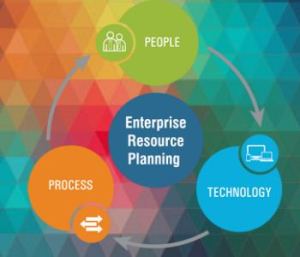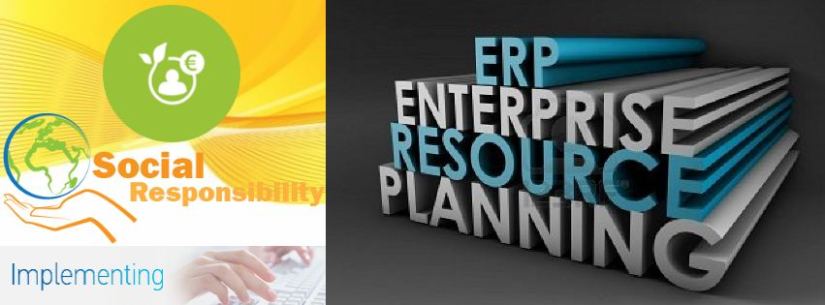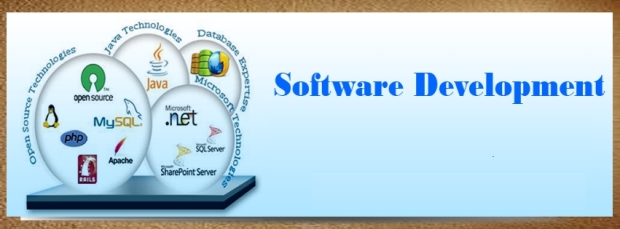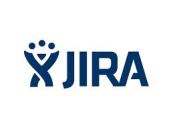Enterprise Resource Planning an effective way for implementing Corporate Social Responsibility programs
An Enterprise Resource Planning software system has been used for some time now to enhance team collaboration, business processes and the organization as a whole. Nevertheless, there are still innovative and new ways in which it could help to make the entire corporation more productive and efficient. One of the most recent developments is to use the software as a way to better guidelines of CSR or Corporate Social Responsibility.
As ERP adoption grows, so must the desire to ethically and responsibly runs a business, both for the good of people and of the company. By using the already comprehensive data collection, analysis powered by ERP apps to link them with CSR, companies could become more responsible socially in the eyes of the public and their clients.
The idea is for existing apps could be the perfect place for adding extensions to help manage CSR guidelines being drafted and finalized by the ISO or International Organization for Standardization under the fledgling ISO 26000 standards. A couple of years ago, ISO launched the development of International Standard that provides social responsibility guidelines for organizations to follow. The work aims to encourage voluntary commitment to social responsibility and lead to common guidance on definitions, concepts and methods of evaluation.
Since ERP systems already acts as central information depositories for numerous key roles and processes in business, it is the perfect place to add further tracking abilities for social programs. This would include things such as labor relations, human relations, environment and corruption which are all being addressed under an ISO 26000 standard. This makes perfect sense and is a natural extension of the program’s data tracking, reporting, management and oversight capacities. It helps provide a more concise manner of tracking and flow of vital information in case disasters such as an oil rig explosion for instance happens. It could help companies enhance their CSR through making such incidents more transparent. As information is power and if data is automatically tracked, it could support ethical firms even during crisis scenarios. Furthermore, if corporate information and decisions are tracked and documented, there’s less opportunity for corruption, according to the ISO proposals.
By creating corporate social responsibility into the software, it will link new responsibilities to an existing app that already has and manages other major corporate data. When risks are determined and a risk mitigation plan is made, the risk management that directly exists in the system that is widely used throughout the firm allows execution of the mitigation plan to be automated to a much larger degree. A separate risk mitigation tool might leave executives guessing as to whether the plan they created is being followed and this may be ead to various unpleasant surprises.
This is truly smart thinking. The BP disaster in the Gulf of Mexico is just one incident wherein a link between ERP and CSR could be extremely beneficial to society. This is a first huge step and another example of how much people have come to rely on the software, notwithstanding its complexity and challenges. The program may not be easy, but it surely helps businesses and could ultimately help boost corporate responsibility anywhere.
Check out some of the Enterprise Resource Planning configuration and customization processes
 One way businesses are coping with the challenge of optimizing and upgrading enterprise apps is to avoid customizing. For their part, service providers are offering more options for configuring applications for particular requirements and industries. However, in some cases, configuration options are becoming numerous and layered that they present their own challenges.
One way businesses are coping with the challenge of optimizing and upgrading enterprise apps is to avoid customizing. For their part, service providers are offering more options for configuring applications for particular requirements and industries. However, in some cases, configuration options are becoming numerous and layered that they present their own challenges.
That is why some organizations hold off on upgrades, weighing the benefits of the new features against fixing broken adoptions. The key is not to customize. While it might be appealing to add few code lines, customizations have a way of multiplying and adding up to trouble, especially during upgrade cycles. When integrating an ERP system to a website, the two words that one is likely to hear are configuration and customization.
Both works in conjunction with one another, but there is a subtle difference between them. Configuration deals with the system components but not the business process requirements. Configuring enables the components to work within a given environment, including currencies, language, time zones and more. On the other hand, customization specifically operates to suit the business needs. This could include anything from adjusting screens and views to changing information that’s displayed for a given group.
Configuring an enterprise resource planning system is of the most critical parts of the process. This means changing the parameters that meet the organization’s language, financial, shipping and customer-facing needs. One could also configure the program to recognize revenue through a certain set of specifications, such as product line or geographical unit. Most configurations survive software upgrades while certain ones do not. Configuration is the normal framework set-up, such as fields, parameters and workflows. The changes are a normal part of any implementation and do not need changes to the source code.
Customization is one of the most controversial topics that surround ERP software. It requires changes to the source code and also a higher level of technical sophistication. Often, business objectives and wants could be met via set-up and configuration than customization. The ERP process could be as large a task as the company requires it to be. Although the ERP package should be configured before it is used, customization is optional. However, it greatly boosts the functionality of the program. Tailored solution may include expanding the functionality with third-party freeware, company-centric task management processes and more. Most organizations begin with the full intention of leveraging off-the-shelf package when they upgrade, replace or implement an extensive application. Nevertheless, as companies get into implementation details, request to make one or more customizations to the program are inevitable.
Every organization is unique and no single solution is going to meet 100 percent of company requirements. Nevertheless, finding the right ERP with the best functional fit would ensure that tailored requirements are minimized. Finding the right program involves defining a clear set of needs and choosing the best solution based on the needs. Often, customizing could be avoided via changing company process or using the workflow features of the package. When customization is required, the modifications must be reviewed and approved by some kind of control body, for instance a change control board.
The ten common disasters and disappointments of ten Enterprise Resource Planning system
Before implementing an enterprise resource planning system, an organization should be aware of some issues. Troubled multi-million dollar software deals that create spectacular failures and big spending nightmares, embarrassing and expensive lawsuits over botched implementations and breaches of intellectual property.
Below are ten ERP scandals that could serve as warning for those planning an upgrade or implementations of this system.
1. The $400 million upgrade to the supply chain of Nike and ERP systems created a $100 M loss in sales, a twenty percent stock dip and a collection of class-action lawsuits. This was back in the year 2000 and the terrifying results were because of a bold enterprise resource planning, CRM project and supply chain that aimed to update the programs in to one superstar one.
2. The failed technology implementation failed to help Hershey’s operation during the Halloween season in 1999. Hershey’s ghastly issues with its system supply chain apps prevented it from delivering $100 million Kisses for Halloween and caused a dip in the stock at about eight percent.
3. In the fall of 2004, more than 27,000 students at the University of Massachusetts and Stanford and Indiana University as well were forced to do battle with ERP apps and buggy portals which left them at best unable to find their classes and worst unable to collect their financial aid checks.
4. The epic tale of the centralization of HP of its disparate North American systems onto one SAP frameworks proves that one could never be too pessimistic in terms of an enterprise resource planning venture management. In 2004, HP’s project managers knew all things that could go wrong with their rollout but did not plan for so many of them happening at once. Eventually, the undertaking cost $160 M order backlogs and lost revenue which is more than five times the estimated cost of the venture.
5. The garbage-disposal giant Waste Management is still embroiled in a $100 million legal battle with SAP over an eighteen-month ERP software installation. The garbage –disposal giant filed suit and claimed that SAP executives participated in a fraud sales scheme which resulted to massive failure.
6. All wasn’t well with bedding-maker Select Comfort’s multi-module system implementation, supply chain and other apps. Thus, in 2008, with serious shareholder pressure to tend the $20 million more project that was indicative of very poor management judgment, the company put the undertaking on hold.
7. In January 2006, Oracle boasted that it’s halfway through the Fusion Applications development process. The master plan was to create the next generation of applications that are thoroughly standard. Over three years later, people are still waiting for the first generation of its suite of Fusion Apps.
8. When CIO magazine surveyed 400 information technology leaders regarding their enterprise systems in early 2008, CIOs declared they remained committed to traditional, on-premise systems regardless of aggravating integration and high-cost issues.
9. The details of the popular ‘mooning’ between Hasso Plattner of SAP and Oracle’s Larry Ellison have become an urban legend. IN 1996, Ellison’s sailing crew was reported to ignore Plattner’s wounded sailing yacht that has a broken mast and bloodied crew member. Oracle and SAP have not stopped battling it out both on land and water ever since.
10. Fallout with the massive CityTime payroll system project in New York which was wracked by cost overruns and a criminal investigation to an alleged kickback scheme that involves former employees of systems integrator SAIC and the subcontractor TechnoDyne.
Transparency in custom software development is not an ultimate goal but is a tool for a successful application
 The main focus of a custom software development is designing and developing applications that are specific to the client’s requirements. Usually, the focus of the development is to deliver websites that are attractive, effective software solutions and fully optimized. However, when it comes to the transparency in developing customized solutions, it is considered as a tool rather than a goal.
The main focus of a custom software development is designing and developing applications that are specific to the client’s requirements. Usually, the focus of the development is to deliver websites that are attractive, effective software solutions and fully optimized. However, when it comes to the transparency in developing customized solutions, it is considered as a tool rather than a goal.
Transparency is a word that has been around for some time, especially in the context of digital projects and partnerships. As a matter of fact, it is touted continuously by client and vendors alike as an ambitious or even boastful attribute. By saying that translucency is a tool instead of a goal, it means that it is not an objective in and of itself. Let’s sight an example of a window. It is transparent so that one could see what is going on outside. The window is needed to make decisions regarding the clothes to wear based on the weather outdoors for instance.
Another example is a glass that is transparent in order to see what is going on inside. This is important to make decisions regarding whether or not one wants to drink the liquid. The same thing, in true partnership clarity is a resource. Relationships in the development of tailored apps are strongest when all sides could be consistently confident that everyone is working toward the same objectives and goals.
Not the development team, the project manager knows the goals or budget better than the owner of the product. That is why, no one is better equipped for directing team toward success. In this scenario, transparency could take the form of project dashboards as well as other metrics that provide visibility toward progress. The dashboards are there to help the product owner drive. Transparency as a tool or set of resources isn’t an endgame but a lofty objective, but only when it is service to even loftier goals.
Being translucent is a major contributor to the success of most internet based businesses nowadays. Not having a face-to-face interaction in doing business on the web could often lead to doubt and uncertainty for any prospective client. When considering being more transparent as an organization, one could see red flags and warning signs that tell one to reconsider. The biggest reason for this is that being transparent typically brings along a familiar sidekick, which is vulnerability.
Even though the word could be a double-edged sword, as long as one plays the cards right and runs a good business, it should not be intimidating. Transparency could in fact liberate one and enable the business to thrive and breathes in confidence and trust in the eyes of possible clients. Customer relationships are the most vital part of a software developer’s business and so professionals should continually look for ways to strengthen and foster those relationships and discover new opportunities. For every software development firm or service provider far and wide, it is a good thing to keep in mind that being limpic is a tool to build effective and successful custom apps.
Three critical questions that an organization needs to ask the software development company
When it comes to selecting the right software development company, unless an organization knows exactly what it is doing, or has recommendations through word of mouth, it could be hard to know where to begin. Even if there is a referral by mouth, it is still worth having several objective criteria against which to judge the software vendor, so one could decide if it is the right option.
In order to make a good choice, there are some critical questions to ask the software development company to have a successful software project. The answers to these questions could go a long way of figuring out which company is best.
Question 1: How does the company ensure that it fully understands the requirements of the software project?
Sixty-eight percent of the project fails, based on the study in the year 2008. One of the big reasons is that the developers often misunderstood the business concern that the client expects the program to solve. Worst, the vendor may give no thought as to how the client expects the package to work from the perspective of the user. A service provider should build a functional prototype that makes it easy for customers to make clear their expectations before wasting both effort and money getting them wrong.
Question 2: How does the vendor limit ‘Work in Process’?
When programmers have to divide their attention and time working on numerous client projects simultaneously, it is analogous to too much undertaking in process. Putting aside one piece of the task and selecting a new one takes up a lot of time and energy. Most of all, it is frustrating when a developer is near to a breakthrough solution.
When developers have to split their time and attention working on multiple client projects simultaneously, it’s analogous to too much WIP. Putting aside one piece of the task and picking up a new one consumes a lot of a developer’s time and energy. It’s especially frustrating when a developer is close to a breakthrough solution. The same as all creative thinkers, programmers work best when they could devote big blocks of unbroken time to a project. Working in developing teams help adjust to the inevitable ebb and handiwork flow that any service business will experience. It further provides an environment in which every individual developer could do the best job.
Question 3: How does the vendor deploy code from development to production?
The biggest source of risk is when code is moved from the development environment, meaning the computer wherein the programmer coded it, to the production environment in which the server where code would run during use. This is called deployment. One wants a service provider who practices automatic deployment against a manual method. The automatic deployment tools enable development firms to work in uniform evolution, testing and production environments, thus potentially damaging discrepancies are eradicated from the beginning. More than that, they allow for continuous delivery of code towards any environment and even a live production one without affecting uptime.
ERP Implementation Strategy requires three things to take into consideration
An organization without an ERP or Enterprise Resource Planning system would be running on so many software that do not allow interaction. Furthermore, customization could be difficult in some instances. This naturally could negatively affect the optimized functioning of the business activities.
 These changed however with the implementation of the ERP software. Information constantly flows and enables one to follow client processes anytime, regardless which part of the process they are going through. Expenses and purchases are registered in a central database which allows for having close control over these tasks. Determining the best ERP implementation strategy could be tricky. It may sound simple enough, such as defining one what needs, designing, configuring, running some testing, training employees, etc. However, as anyone who has been involved with its implementation before could attest that this is not typically the scenario.
These changed however with the implementation of the ERP software. Information constantly flows and enables one to follow client processes anytime, regardless which part of the process they are going through. Expenses and purchases are registered in a central database which allows for having close control over these tasks. Determining the best ERP implementation strategy could be tricky. It may sound simple enough, such as defining one what needs, designing, configuring, running some testing, training employees, etc. However, as anyone who has been involved with its implementation before could attest that this is not typically the scenario.
To avoid the same mistakes when defining the best implementation strategy, below are the three main things to consider.
1. Waterfall against agile software development. Typically, most consultants as well as system integrators follow the waterfall approach that entails a more formalized and sequential approach to design, build and test. On the other hand, agile requires a more iterative and less structured method for rolling out new functions. Waterfall typically works for bigger organizations and those wanting to standardize their process. Agile could work for smaller ones or more nimble companies that are not looking for a more standardized operations. It is important to understand the advantages and disadvantages, the tradeoffs and risks of every approach and decided where the implementation would fall.
2. Reengineering business processes or paving the cowpaths. Rushing into the system implementations without a deliberate focus on process reengineering could likely automate already inefficient processes or what is called the paving the cowpaths. Project managers and CIOs who are more keen on transforming and enhancing their business strategies must build the right level of effort and focus in the plans for the project, otherwise their organizations would revert naturally to the cowpaths regardless of how hard they may try. Inexperienced consultants and system integrators tend to underestimate the time and effort needed to focus on business methods that would complicate the problem further.
3. Standardization against autonomy. During the project planning stage, it’s necessary to find out if and where the company would standardize processes across the firm. Most clients embark on implementations that tend to heavily standardize across the organization. Wherever the firm may fall on the spectrum, it is vital to recognize that standardization would need more time up front in the reengineering and the requirements phase of the project. On the other hand, companies leaning towards less standardization would require more resources and time during the designing, testing and training phases.
There are other strategic considerations that should be defined as well before signing contracts and starting the application, like organizational change management and communications, data, integration, language, single system against best of breed and many others. The three considerations above are a good place to begin and must be defined further together with others as part of an effective strategy.
Seven Technologies That Provided Great Opportunities To The Software Professionals
Software development is ever changing and highly dynamic business. There is not certain trend which can continue for year after years. That’s why software Development Company should ready to either higher or skilled their staff according to the current demand in the market. Currently there are certain skills that are growing faster than others.
1 Cyber security:
IT job related to cyber security is currently most trending data handling job in the market. Today with increasing number of data breaches make headlines and consumer anxiety concerning personal information rises to a fever pitch, therefore, there is expectation that demand for skill IT expert for this skill to continue to grow as organizations look for software professionals who can both proactively and reactively attend to security gaps and threats and make sure about the system.
2. Big Data:
Big data is a big deal, whether the organization is working on marketing, pharmaceuticals, healthcare, defense systems, video games or any other category it is important almost everywhere these days. Today companies crave information that can help them gain insight into customer behavior, create a strategies for the future and predict future and plan the strategy in order to achieve more growth opportunities, so IT experts who can extract intelligence from data have a secure, lucrative future and wider scope in the software development industry.
3. NoSQL:
Today mobile apps compare to five years ago `and big data and the cloud gain even greater mainstream acceptance, NoSQL databases are also gaining popularity in the marketplace, Professionals who know when and when not to use these new software development approaches will bring much-needed flexibility, efficiency and agility to their clients.
4. Hadoop:

Hadoop, is the open source Apache framework that facilitates data analysis and interpretation, this software recently becomes very popular all over the world. The demand for Hadoop professionals who also have NoSQL and Big Data are increased drastically in the software development industry.
5. JIRA:
Project and issue-tracking software JIRA has now days regarded highly in both startups and in big enterprises, especially in the company who has large teams of software developers. In many organization reporting and issue tracking is a big obstacle all organizations face, and the demand for software technology like JIRA who can easily track and solves the problem will continue to see explosive growth in the future time and demand for skill people who can handle this issue tracking software will naturally increase.
6. Python:
It is sound strange because python is one of the oldie but goodie. It’s a one of the mature language which continues to dominate in the software development market even after 25 years. This is a one of the foundation programming language taught in college-level programming courses, Today’s demand for python is reemerge as many IT global companies understand that it is a it’s a simple, elegant and powerful language with which can easily help to build various Web properties.
7. Cloud:
Nothing surprising here cloud technology is big global boom all over the world. Cloud become popular because businesses love technology and talent which can save money and maximize efficiency, which reflects in the continued growth of cloud tech and the demand for talent with related experience in the cloud technology has increased drastically in the software development. In fact that the assumption is that 78 percent of U.S. small businesses will have fully adopted the cloud by the end of 2020, which is current just 38% so the, job opportunities should soar in this field.
Apart from these there are some other fields like mobile applications, puppet, Information security, Salforce’ CRM are some other tools and technology which become one of the popular IT branches in which new age software engineers should try to build their career.
Ten Easy Steps that One Should Keep In Mind for a Successful Outcome In The IT Outsourcing
The following items are the ten steps to outsourcing success that companies and business organizations should keep in mind.
1. Defining clear objectives is the key to successful outsourcing strategy. The objectives state the reasons for the endeavor. Moreover, it illuminates business value and offer a working framework to make decisions regarding which vendor to choose, what outsourcing model to use, the projects to be outsourced and the risk levels to assume.
2.Counting the costs is very important. With so much pressure these days to cut on expenses by putting expensive skilled labor tasks offshore; it is easy to underestimate the true costs that are involved. There may be hidden costs that could add to the actual work.
the costs is very important. With so much pressure these days to cut on expenses by putting expensive skilled labor tasks offshore; it is easy to underestimate the true costs that are involved. There may be hidden costs that could add to the actual work.
3. Understanding and managing risks actively by keeping a list of possible risks and awareness that there may be things that could go wrong along the way. Moreover, it is important to prioritize and manage the risks aggressively based on the impact expected.
4. Measure and track the benefits in an objective manner by letting the numbers speak for themselves. If the benefits are short of what one expects, these should be known to take corrective actions or measures. On the other hand, if performance is extraordinary, this should not be downplayed either.
5. It is important to use an effective outsourcing model that has been proven to be successful. Moreover, the model should meet an organization’s business model and fits with current standards. There are many outsourcing models, each with weaknesses, strengths and the right applications.
6. Choosing complementary business partners is more important than choosing the right business model. When evaluating offshore service providers, there should be a request for proposal and information process. All prospective vendors should be assessed if they are equipped to meet functional and technical requirements.
7. An organization or even an individual should start slowly and build gradually. It is important to take time and make certain to establish a robust foundation for executions in the future. Start small with one, well-defined self-contained pilot project.
8. Another important step is to monitor and evaluate progress to understand the relative success or failure of the overall outsourcing strategy. To do this, one should start with an established baseline of the latest performance with the use of the same scorecard metrics that are used to evaluate offshore performance.
9. Look for specific experience fit to avoid being someone’s ‘guinea pig’. This is especially important when outsourcing complicated technical projects like the development of software. For instance, if one needs a business plan to open a retail store, the best results could be achieved if the consultant hired has verifiable experience in the retail field.
10. Maintaining a degree of separation between offshore and onshore resource teams may be reasonable, but could result to suboptimal performance.
Thus, it is also important to keep the relationship personal. This is because ultimately, what would make any outsourcing engagement successful or otherwise are the people.
Check Various Aspects When Looking For A Software Development Company
Today, when choosing a software development company, it could be a really tough job. You would want to check different aspects before you finalize your choice and hand over your project to your service provider. After you do the basic analysis, you would want to check out several reputable software service providers that meet your certain requirements.
So, when it comes to software application development and the services of a software development company, what are the things you should look out for?
Below are some of the factors that you could consider when hiring the services of a software development service provider.
1. Technology expertise – is the most altering factor in the software field. Thus, selecting a suitable technology for a software app is very important. Find out which technologies the company has an expertise with.
2. Quality service – is of vital importance and error-free software creates good market image. Make sure to test your software from the user’s point of view to determine its quality before putting it in the market.
3. Past experience – is a vital factor in looking for software application development. Find out what they firm has done before for other clients to determine its strengths and weaknesses. Moreover, this helps you determine if it could fulfill your requirements or not.
4. Timely delivery –is very important in the field of software development. This is because you have to launch your software before your competitors. It helps you achieve a big share in the market, thus make certain the service provider could complete the task within an estimated time frame.
5. Support – it is the integral part of smooth functioning of a software app. Make sure the service provide offers the right software support system.
When looking for a software development company, there are plenty you can find. That is why, it is necessary to tread carefully before you hire one. Software outsourcing is a common trend today. This process not only saves plenty of effort and time involved in executing and initiating a new project but it also serves as a cost-effective method of project implementation. Do not forget the reputation of the software development firm. The technical capabilities of the serviced provider could be determined to some extent by checking out the portfolios of its previous projects.
Your budget is often the driving factor when choosing a software service provider. It is then essential to ascertain that quality deliverables are implemented by the company for the price paid. Remember, deadlines are critical and could take plenty of focus and dedication to meet or to beat in all kinds of business. An effective software service provider must exhibit consistent quality patterns and delivery in order to address business needs. The factors determine the service provider’s approach to costs and timelines that are associated with your project.
In a nutshell, consider a software development firm that is technically adept, on-time, methodical, cost-effective and with quality services. Moreover, it should provide an extensive array of high-quality in-depth support services throughout the whole software development process, implementation as well as post delivery phases of a project.
Why Software Development Outsourcing To India Is A Better Option In Today’S Tough Business Competition?
Commonly, one of the benefits of software development outsourcing in India includes cost-effectiveness. Savings is what most companies are looking for these days. It is highly important for software service providers and clients to maintain proper communication with each other aside from handling outsourcing legal matters involved in offshore outsourcing.
 Software development outsourcing in India is one of the most preferred destinations when it comes to software development. You could find major global giants going for Indian software service providers. So, why should you outsource to India? Because India has an education system that offers unique blend of communication skills and technical knowledge. This makes Indians as the most talented software programmers in the world nowadays. Moreover, Indian firms like TCS, Infosys, HCL Technologies have top quality resources at reasonable rates. When speaking of manpower, there is no doubt that India is one of the most talented in the world. Highly skilled personnel and affordable price acts as the magnet for companies anywhere in the world.
Software development outsourcing in India is one of the most preferred destinations when it comes to software development. You could find major global giants going for Indian software service providers. So, why should you outsource to India? Because India has an education system that offers unique blend of communication skills and technical knowledge. This makes Indians as the most talented software programmers in the world nowadays. Moreover, Indian firms like TCS, Infosys, HCL Technologies have top quality resources at reasonable rates. When speaking of manpower, there is no doubt that India is one of the most talented in the world. Highly skilled personnel and affordable price acts as the magnet for companies anywhere in the world.
Software development outsourcing in India is highly preferred due also to the favourable policies of Indian government. The Indian government is pulling many of foreign direct investment into the country, making investing in India so much easier. Moreover, the infrastructure in the country is also improving impressively. Positive changes are visible in the area of electricity, telecommunications, building of roads and many more. Therefore, the advantages of Indian outsourcing are immense. One would never regret outsourcing software development to India.
There are also considerable cultural differences when you outsource to India that have to be appreciated. In its culture, there is a huge deal of respect shown to managers and their words are rarely questioned, most certainly not in public. With Indian software development service providers, communication is more formal and people call each other by surnames and they always call their managers ‘SIR’. When deciding to software development outsourcing to India, you have to be careful in your consideration and weigh your options well.
With Indian partners, you have to understand the cultural differences you can expect in order to get the work done and make sure you are clear about whom you have on-site and their legal status. While Indian outsourcing in general is spurred by cost reduction, this is just one of the reasons why many companies outsource to the country. Outsourcing to India offers businesses the freedom to pass their non-core activities to outsourcing firms. As a whole, it is a practice of handling over work to a person or group of persons who could provide cost-effective deals to the business development. India has one of the biggest pools of English-speaking and highly educated professionals. The low wages make it very advantageous indeed to companies from other countries, particularly the Western firms. Indian outsourcing is an old concept but is increasing in popularity among leading firms. Companies now are allocating their in-house operations to various service providers in India.










